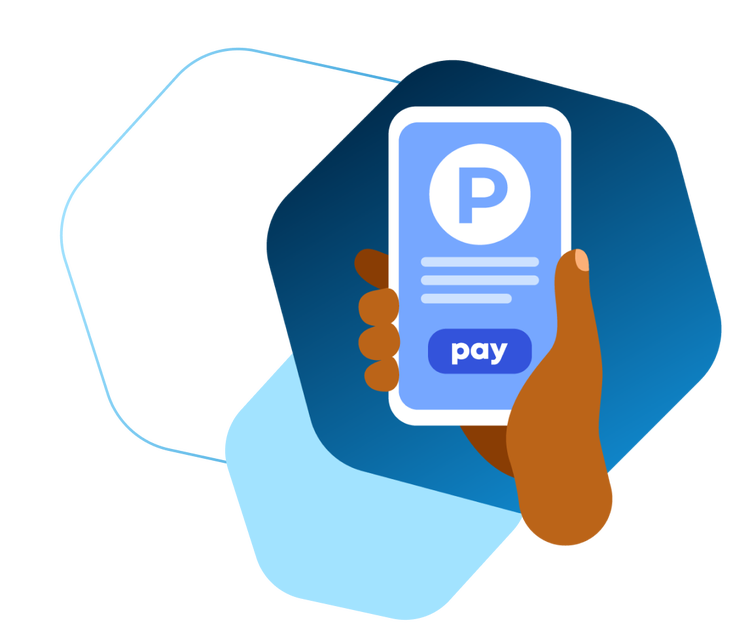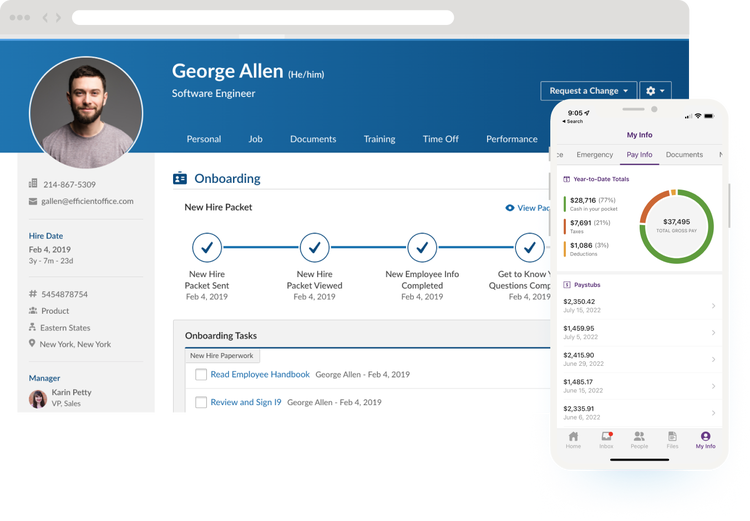
We Found the 3 Best Compensation Strategy Tips for Tech Companies in 2023
Talent shortages in the tech industry have created a classic supply-and-demand situation with a smaller pool of qualified candidates driving salaries through the roof. While this is great news if you’re a techie with sought-after skills, it’s creating a big challenge for employers.
To attract and retain key employees, many companies are forced to up their salaries. According to the December 2021 Gartner IT Compensation Increase Poll:
- 50% of organizations had given out raises in response to job offers their employees had received from other companies.
- 15% had bumped pay by 50% or more.
What’s more, the pay paradox is even more tricky for tech companies, who often feel pressure to be on the cutting edge and lead the charge with new gold standards of employee experiences, compensation, and benefits to attract educated, tech-savvy job seekers.
The money for compensation and benefits has to come from somewhere, and the uncertain economy isn’t helping. Like a house of cards, the salary competition couldn’t (and didn’t) last. In 2022, more than 42,000 workers in the U.S. tech sector have been laid off in mass job cuts. And some companies encountered a public relations nightmare when they didn’t approach these tough decisions in a smart, humane way, such as holding an online town hall meeting to announce widespread firings.
Getting compensation right is essential. According to Gartner Global Labor Market Survey, money is still the number-one driver for retaining and recruiting a tech workforce. To be strategic about compensation while protecting your company’s future, your tech company should follow these three best practices.

Monitor Your Pay for Competitiveness
As an industry, tech has historically paid employees more. According to Zippia, tech employees earn up to 85 percent more than people who work in other fields, and those figures are growing. However, in a 2022 report on tech salaries by Hired, the salary gap between small and enterprise organizations is closing. The pay difference between corporations and boot-strapping startups is the smallest since 2019.
Additionally, employees are recognizing their leverage. Even with layoffs, candidates feel empowered, and they’re willing to leave their current role for better fit and higher-paying opportunities. Hired’s report found that half of respondents expect salary increases by 2023.
And they’re not taking “no'' for an answer. In the study, employees stated that if they’re denied an expected raise in the next six months, 90 percent would immediately start looking for a new job.
Collect Data on Counter Offers
Competitive pay is essential for recruiting, and counter offers are critical to tech talent retention. Tech leaders are privy to first-hand feedback from candidates and employees who are sharing counter offers, and this information should inform and direct salary ranges.
CIOs and IT managers should work closely with the HR team to share the recruitment and retention challenges they’re facing due to noncompetitive pay. You can also get intel about going rates from sites like Glassdoor or PayScale.


Identify the Most Valuable Positions
It’s also important to realize that not all positions hold the same weight. Identify the tech roles and skills that are key to your company’s operations and face a higher attrition risk. Organizations with limited financial resources should prioritize allocating increases to these high-risk, business-critical roles.
Consider Employee Location in Salary Decisions
Location will also be a factor in your pay strategy. According to Hired, here are the U.S. cities with the highest average salary offers:

- San Francisco Bay Area: $174,063
- Seattle: $168,069
- New York: $161,128
- Boston: $158,548
- Austin: $157,612
Remote salaries are also climbing. The same Hired study found that the average remote IT job pays 162,950 dollars, ranking third highest overall.
During the war for talent, many companies adopted geo-neutral compensation, paying employees the same wage no matter where they reside. According to a startup compensation study by the fintech company Carta, about a quarter of enterprise companies valued at more than 500 million dollars choose to pay employees equally no matter their current location.
Smaller companies may reconsider this approach. Carta’s study found that 84%t of companies take employee location into account when deciding on compensation packages. Offering pay rates that are dependent on where the employee lives can help keep your salary budget in check.
Leverage Variable Pay Options
Staying competitive with salaries is important, but wages are long-term fixed costs. As companies recalibrate to the current economy, hiring and pay freezes will become more likely. Unless there’s a crisis, it’s rare to reduce someone’s base pay once it’s raised. Instead, companies can put variable pay components into play as needed.
Skills-Based Premium Pay
For example, you can offer skill-based premium pay. This compensation strategy ties salary to performance, creating benchmarks employees must achieve to receive the premium. For example, an employee may receive a monetary reward when they master a skill or deliver a certain outcome.
Premium pay can be flexed and adapted as business needs and market conditions evolve.


Stock Options
Another opportunity is to offer stock options. To reduce churn, large tech companies, such as Zillow and Amazon, are leveraging stock compensation. While it’s an attractive perk, this tactic may not be enough of an enticement in a down market when employees watch the value of their stock-based compensation drop. To address the issue, some companies are granting employees additional stock to offset those losses.
Stock options are also a good tool for startups in their seed, Series A, or Series B investment rounds. New hires can choose equity versus cash compensation, which could be a draw for companies with optimistic projections.
Bonuses
Your compensation strategy can also include bonuses. For example, you can attract good talent by providing a signing bonus. You can offer a lump-sum payment or split the reward into milestone increments, such as awarding the first half upfront and the second half after the employee completes 90 days of satisfactory work.
Retention bonuses are popular for keeping valued employees from leaving to go to another company. The advantage of a retention bonus is that it’s a one-time payment instead of a higher salary in perpetuity. Or you can offer incentive pay bonuses for tech talent with critical skills during initiatives, such as digital transformation. Bonuses don’t always have to be cash; you can also offer stock or a combination of both.
Non-Cash Perks
Finally, look into non-cash perks, such as offering remote working arrangements, which remains a top priority for employees. When asked in the Hired survey if they would be willing to return to work in the office if it meant greater job security, 54% of candidates stated “yes.” However, they also stated that they would start looking for another job with more flexible remote work options immediately.
In fact, only 33% of respondents would trade remote work for a fully in-person role with a higher salary.
Comprehensive Benefits & Perks
Of course, compensation is more than just salary. Employees also look for comprehensive benefit packages and perks. Top of mind are traditional benefits, such as paid time off and health insurance. Hired found that more candidates are willing to trade in a higher salary for practical benefits like health insurance and 401(k) retirement matching.

Train Managers on How to Talk About Compensation
Money talks, but so do managers. It’s important that managers are prepared to have candid and thorough conversations around pay, especially when retention is key. How they present your company’s compensation strategy can have a direct impact on an employee’s decision to stay or go.

There are three core elements of an effective pay conversation:
Define Your Compensation Philosophy
First, managers need a deep understanding of your compensation philosophy. Your philosophy provides the rationale for pay decisions and creates the link between compensation and your company’s overall objectives, culture, and financial situation.
For example, a venture-backed enterprise that is driving industry disruption may dedicate the majority of its budget to pay top-of-market rates to recruit top talent. On the other hand, a bootstrapping tech startup in a competitive field might use flexible scheduling or generous equity in lieu of a high base salary to attract skilled performers.
There is no one-size-fits-all compensation philosophy; it should match your company’s goals and financial situation. The key is that it’s clearly defined and easy to convey.

Communicate Your Offerings
Next, make sure managers can explain the value of your compensation package when they’re making job offers or fielding questions from current team members. They should be well-versed on your pay levels and how they fit industry standards. Managers should also have a deep comprehension of variable pay options like bonuses, benefits, and wellbeing programs. Employees and job candidates will likely have questions. If they can’t get the answers they need from managers, they may lose confidence in what you’re offering.
It’s also important to establish a clear line of communication between HR, finance, and management. While your organization needs to have set compensation ranges, you also need a process for making a counter offer that may exceed those levels if a situation warrants making an exception. Giving hiring managers too much independent leeway in deciding how much to offer or counteroffer could create budget issues.

Address Pay Transparency
Finally, make sure managers can address public and private pay data. Today, employees can get a lot of pay information online. Managers should be prepared to answer questions about publicly reported compensation numbers and communicate the limitations of self-reported data.
In some cases, employees are sharing their pay information with each other, which creates a different—and often unwelcome—level of transparency. Managers should also be equipped to share the guidelines your organization uses to set pay ranges. They should also communicate your promotion and raise process so employees understand what it takes to earn more.
Having these conversations can benefit you and your employees. According to a study published in World Scientific News, getting promoted is the most effective motivational incentive for employees, encouraging them to hit their career and compensation goals.
A set plan also helps companies create more equitable compensation packages that could support retention. By basing pay scales on years of experience, skills, and performance measures instead of succumbing to a more assertive employee’s demands, companies establish set standards that can help close the gender and racial pay gap.


Become the place people want to join and stay.
BambooHR gives you the right tools to invest in every aspect of your employee experience.
Employee Satisfaction with eNPS®
Understand at a glance how your employees perceive the value of pay, benefits, and perks at your company.
Employee Wellbeing
Dig deeper to discover how compensation is impacting employee sentiment or motivation.
Applicant Tracking
Fine-tune your offers to improve acceptance rates and strategically grow your business.
The Bottom Line is the Bottom Line
Today’s tech worker wants employers to show them the money. Compensation is consistently ranked as both a top attraction and attrition driver by tech employees. In today's competitive labor market, many aren’t afraid to look elsewhere, seeking new opportunities that offer better compensation packages and more flexibility.
How you respond will directly impact your business. Tech and HR managers must make monitoring and raising pay competitiveness a priority, building flexibility into their compensation strategies and equipping individual managers for successful pay conversations. Your employees are your most important asset and they know it. Show them that you value them by designing a compensation strategy that can work for everyone.